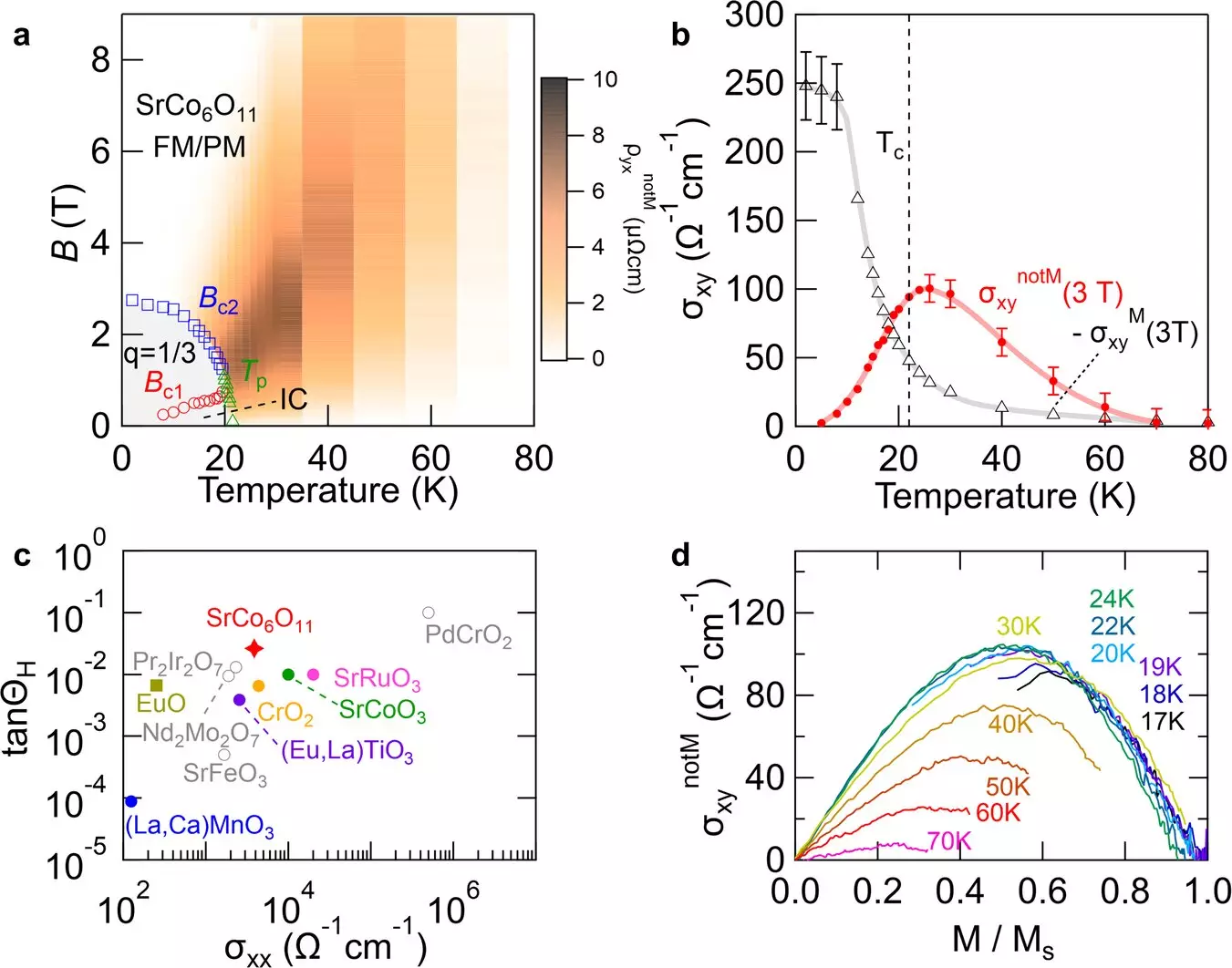The recent research conducted by a team at the University of Tsukuba has shed light on the fascinating world of electron spins in magnetic materials. They have uncovered a groundbreaking discovery regarding the anomalous Hall effect that occurs during phase transitions, specifically known as the devil’s staircase magnetic transition. This finding has the potential to revolutionize the field of magneto-thermoelectric conversion and open doors to the development of innovative thermoelectric conversion materials.
One key aspect of this research is the exploration of the anomalous Hall effect in magnetic metals. Unlike the traditional Hall effect, which occurs when an electric current interacts with a magnetic field, the anomalous Hall effect can manifest independently of external magnetic fields in ferromagnetic materials where electron spins are aligned. This alignment typically results in the anomalous Hall effect only being present below a specific temperature, known as the magnetic transition temperature. However, the researchers observed a significant deviation from this norm in their study, where a large anomalous Hall effect was observed even at temperatures surpassing the magnetic transition temperature.
The magnetic material SrCo6O11 played a crucial role in the research findings due to its peculiar magnetic properties. This material exhibits a unique magnetic transition behavior referred to as the “spin-fluctuating devil’s staircase,” which is characterized by varying levels of spin fluctuations. The researchers found that this specific type of spin fluctuation, known as spin-flip fluctuation, led to an intense scattering of conduction electrons, ultimately resulting in the significant anomalous Hall effect observed in the study.
The implications of this research are far-reaching, particularly in the realm of magneto-thermoelectric conversion. By uncovering the mechanisms behind the large anomalous Hall effect in magnetic materials, the study provides a new foundation for the design of materials tailored for thermoelectric conversion technologies. This breakthrough has the potential to drive significant advancements in the development of novel thermoelectric conversion materials, paving the way for more efficient and sustainable power generation methods.
The research conducted by the University of Tsukuba research group has not only deepened our understanding of the intricate behaviors of electron spins in magnetic materials but has also unveiled new possibilities for the field of thermoelectric conversion. This study serves as a testament to the endless potential of scientific exploration and innovation, offering a glimpse into a future where sustainable energy solutions are within reach.


Leave a Reply
You must be logged in to post a comment.